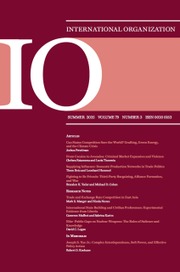No CrossRef data available.
Article contents
How Migrating Overseas Shapes Political Preferences: Evidence from a Field Experiment
Published online by Cambridge University Press: 16 October 2025
Abstract
Scholarship on cross-border migration and welfare state politics has focused on native-born individuals’ attitudes. How does migration affect the redistribution preferences of migrants—key constituents in host and home countries? We argue that migration causes migrants to adopt more fiscally conservative attitudes, driven not only by economic gains but also by psychological shifts toward self-reliance and beliefs in the prospect of upward mobility. We present results from a randomized controlled trial that facilitated labor migration from India to the Middle East. The intervention prompted high rates of cross-border migration and significantly reduced support for taxation and redistribution among migrants. By contrast, left-behind family members did not become more fiscally conservative despite also experiencing economic gains. While the migrants became economically confident and self-reliant, their family members grew increasingly dependent on remittances. Our results demonstrate that globalization’s impacts on welfare-state preferences depend on the pathways by which it generates economic opportunity.
Information
- Type
- Research Article
- Information
- Copyright
- © The Author(s), 2025. Published by Cambridge University Press on behalf of The IO Foundation
Footnotes
This paper’s contents were preregistered on the Open Science Foundation/EGAP online registry (20210608AE and 20190327AB).

